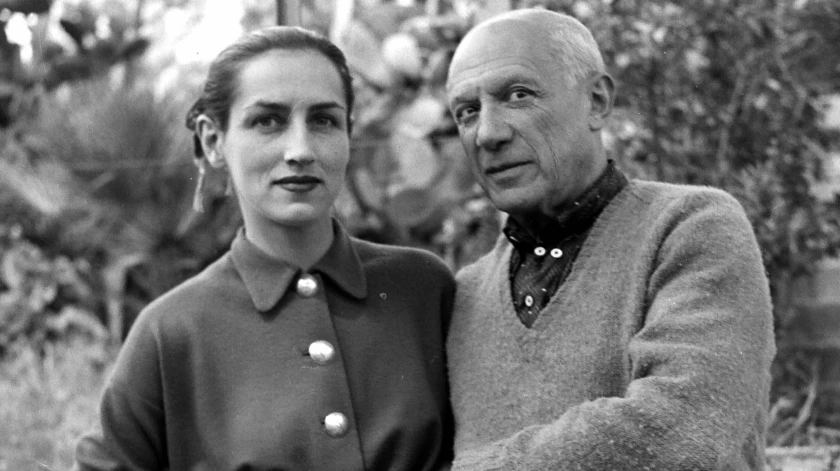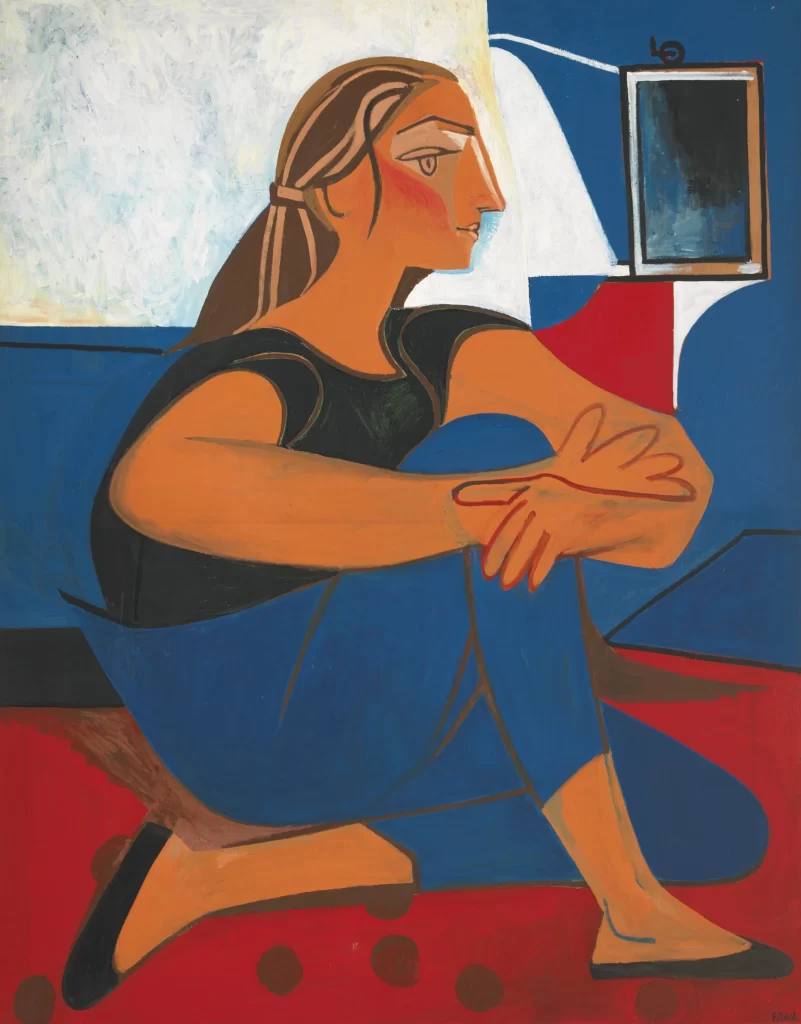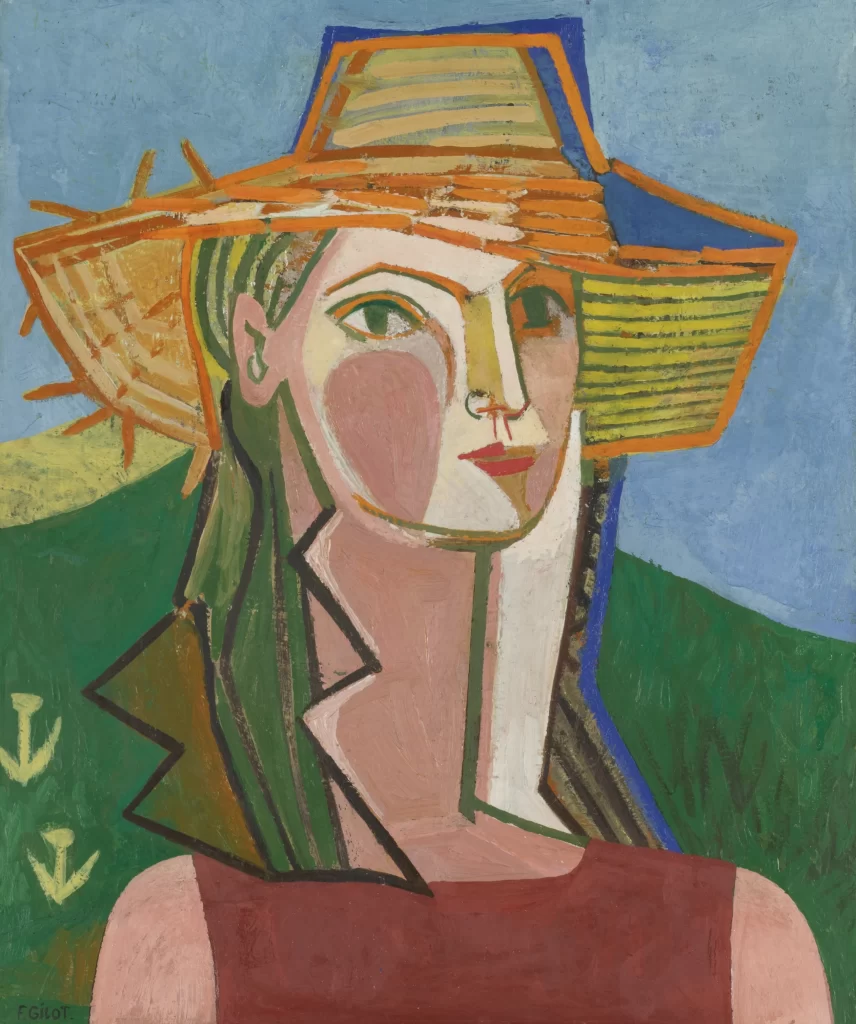
How artist Françoise Gilot, who has died at 101, fell in and out of love with Picasso

“No matter how old you are, you must behave like the ocean. Watch the movement of the waves, the coming and going of the tides. All life has movement, rhythm, a momentum you must seize like a dancer, and if you allow this movement to flow through you, then you become one with the rhythm of life,” artist and memoirist Françoise Gilot, who shared history with one of history’s greatest artists, Pablo Picasso, wrote once. Gilot, 101, the fifth among a succession of Picasso’s long-term companions (in addition to countless paramours), who died in New York City last Tuesday, seized momentums, and moments, all her life.
Gilot was conditioned to go ‘too far’ simply to prove to herself that she was capable of it: what frightened her in any degree, it fascinated her at the same time. She had decided to be a painter as a child. Later, while she studied law at her agronomist father’s insistence, she returned to her true passion of painting during the Second World War when art faced heavy censorship in Nazi-occupied France. In May 1943, when she met Picasso — at a small restaurant, Le Catalan, in the Rue des Grands-Augustins on the Left Bank in Paris — she was all of 21, but already felt that ‘painting was my whole life’.
A risk worth taking
‘When I met Pablo, I knew that here was something larger than life, something to match myself against. The prospect sometimes seemed overpowering, but fear itself can be a delicious sensation. And so I had the feeling that even though the struggle between us was so disproportionate that I ran the risk of a resounding failure, it was a challenge I could not turn down,’ she writes in her compelling memoir, Life with Picasso (1964), written with literary critic Carlton Lake.
Picasso was 61 at the time. When Gilot broke the news to her father, he not just disapproved, but was enraged, eventually forcing her to leave the house and take shelter in her grandmother’s. As a muse, Gilot provided him not only inspiration, but also steadfast support through the peaks and troughs of his tempestuous temperament, and artistic journey. In a pattern that had become all too familiar, he had left behind four previous partners before ultimately passing away (at the age of 91 in 1973) while he was married to his sixth.
Also read: Riyas Komu interview: How art can be a site of political discourse, dissent
Gilot, who took her children — Claude and Paloma — and left Picasso in the summer of 1953, was the only one to walk away, refusing to be a mere footnote in the shadow of his genius. Hers was a courageous act of defiance, and a stride towards autonomy and self-discovery. Despite the formidable allure of someone whose works would be admired world over and written about for all times to come, Gilot chose to reclaim her independence and forge her path as an artist in her own right.
The one who left
Gilot’s decision was both unforeseen and unforeseeable in the life plan Picasso may have chalked out for himself in the fag end of his life. He was rich and famous, and though he could be insufferable most of the times, he was also irresistible to scores of women, effortlessly commanding attention and adulation from those around him. He was Picasso, after all: the best-known artist in the world, a demigod. For 10 years, they had been a couple, despite the fact that there was 45-year age gap between them.

Days before Gilot walked out on him, leaving his Villa La Galloise in the French coastal town of Vallauris, Picasso had tried to persuade her not to leave. “No woman leaves a man like me,” he had told her once, fixing her with his darkly luminous basilisk gaze. He sought to sway her decision — from making a fervent plea, to berating her, to appealing to her sense of duty as a mother, to outright threatening her. “You imagine people will be interested in you? They won’t ever, really, just for yourself. Even if you think people like you, it will only be a kind of curiosity they will have about a person whose life has touched mine so intimately. And you’ll be left with only the taste of ashes in your mouth,” he had said.
“For you reality is finished; it ends right here. If you attempt to take a step outside my reality — which has become yours, inasmuch as I found you when you were young and unformed and I burned everything around you — you’re headed straight for the desert,” Picasso had told Gilot who, as it turned out, was not headed for the desert. Far from it. She continued to flourish as a painter, carving out her own unique space in the art world.
Torn between love and a sense of the self
Gilot’s journey with Picasso began as a tale of artistic admiration and intellectual connection. Drawn as much to his art as to his unconventional spirit, she found herself captivated by the man who would come to redefine the world of art. Their initial encounters sparked a passionate romance, fuelled by shared conversations, artistic exploration, and a mutual desire to challenge the boundaries of their craft.
Gilot was not only enamoured by Picasso’s artistic prowess but also by the complexities of his persona. Yet, as their relationship deepened, she began to glimpse the darker shades of Picasso’s temperament. His fiery intensity, at times, turned into possessiveness and emotional volatility, which often ended in abuse. The same passion that had initially sparked their connection now became a source of turbulence, testing their love.
Also read: How SH Raza and Progressive Artists’ Group put India on international art map
In the initial days of their courtship, Picasso had brought Gilot face to face with Dora Maar, his mistress and muse for Weeping Woman, a series of oil on canvas paintings, forcing her to accompany him to her place to seek Dora’s confirmation that their relationship was over. During that encounter, he not just made a show of his feelings for Gilot in an ugly way, but also hurt Dora in front of his new love interest.
When Gilot questioned him as to how he could have precipitated a scene that was so ‘disagreeable’ for everybody, he turned into an animal: ‘I did that for you, just to make you realize there’s nobody else as important as you in my life. And this is the thanks I get—your aloofness and a bawling-out. You’re not able to feel intensely about anything. You have no grasp of what life is really like. I ought to throw you into the Seine. That’s what you deserve.’
Such fits of rage and outbursts became regular later. However, as Gilot’s own artistic voice blossomed, she found herself yearning for a more equitable partnership, which allowed her the freedom to express her individuality and explore her own artistic path. Picasso, entrenched in his own creative pursuits, often overshadowed Gilot’s aspirations and relegated her to a secondary role in their shared narrative.
It was in this clash of desires and the realisation of a fundamental imbalance that Gilot’s love for Picasso began to wane. The weight of his fame and the toll it took on their relationship became increasingly apparent. Gilot found herself at a crossroads, torn between the love she still felt for Picasso and the need to assert herself to assuage her sense of the self.
Life with Picasso
From the pages of Life with Picasso, he emerges as an incredibly talented artist that he was. Gilot delves into his methods and explores his groundbreaking ventures in various art forms like etching, lithography, sculpture, and pottery. She dwells on Picasso’s genius, his constant need for creativity, and his ability to transform and challenge conventional artistic norms. Yet, when it was released in 1964, it caused a lot of controversy. Picasso attempted, but failed, to stop its publication through three lawsuits.

Around 40 French artists and intellectuals, some of whom had once been Gilot’s friends seeking favour from Picasso, signed a manifesto demanding the book’s ban. It seemed they were fine with Picasso using Gilot as a subject in his numerous artworks, but considered it scandalous when she portrayed him in hers. “In that pre-Me Too era, women were not supposed to bite the tires of the Humvees that were rolling over them,” writes novelist Lisa Alther in her Introduction to the book’s revised edition.
Also read: Of veins, ink and fire: Kochi-Muziris Biennale’s fifth edition curates resistance
The book, however, doesn’t shy away from highlighting Picasso’s flaws. It exposes his moodiness, selfishness, perversity, and casual cruelty, which Picasso couldn’t tolerate. When they had met, Picasso was gaining fame and recognition for his art; his ego only grew as he received widespread admiration. Also, Picasso’s fear of death and unresolved childhood traumas led him to seek younger women as a means to avoid confronting the realities of ageing.
Gilot also acknowledges the valuable lessons she learned from Picasso about hard work and artistic discipline. She understood the importance of preserving her artistic identity amidst Picasso’s powerful influence. Through Picasso, she also had the opportunity to meet her admired painter, Matisse, who had a style and temperament more aligned with her own artistic sensibilities, focusing on harmony and colour schemes that defined space. Picasso helped Gilot discover who she was not as a painter, while Matisse helped her gain a deeper understanding of her own artistic self.
Life after Picasso
After parting ways with Picasso, Gilot found solace in her friendship with surrealist painter Luc Simon, whom she married in 1955. They had a daughter named Aurélia before their separation in 1961. Gilot’s artistic journey took her to the United States in the early 1960s, where she began exhibiting her work. In 1962, the prestigious Tate Gallery in London provided her with a studio, where she painted a captivating series inspired by the myth of Theseus and the Minotaur. In 1969, an exhibition in Los Angeles introduced her to Jonas Salk, and they married the following year. They lived and worked together in California, Paris, and New York until Salk’s passing in 1995.
Throughout her career, Gilot’s art mesmerized audiences with its bold use of colour and movement. Alongside her paintings, she authored several books, including Interface: The Painter and the Mask (1975), Matisse and Picasso: A Friendship in Art (1990), and About Women: Conversations Between a Writer and a Painter (2016), co-written with Alther. Her artwork can be found in renowned museums worldwide, such as MoMA, the Metropolitan Museum of Art, and the Pompidou Centre. In 2009, Gilot was honoured as an Officer of the Légion d’Honneur for her contributions to the art world.
It was Gilot’s innate thirst for personal growth that had led her to leave Picasso, defying the prevailing conventions of her era. She chose to prioritize her own artistic journey and the pursuit of self-fulfillment over the comforts and compromises of a love that had lost its equilibrium. Her decision to leave was not an act of betrayal or indifference, but rather an act of self-preservation. It was the realisation of the fact that true love should empower and uplift, rather than overshadow and stifle. It showed us how Gilot, who had conquered her fear of water and learned to swim as a child, could act ‘like the ocean’ as an adult, subsumed by her own currents.


